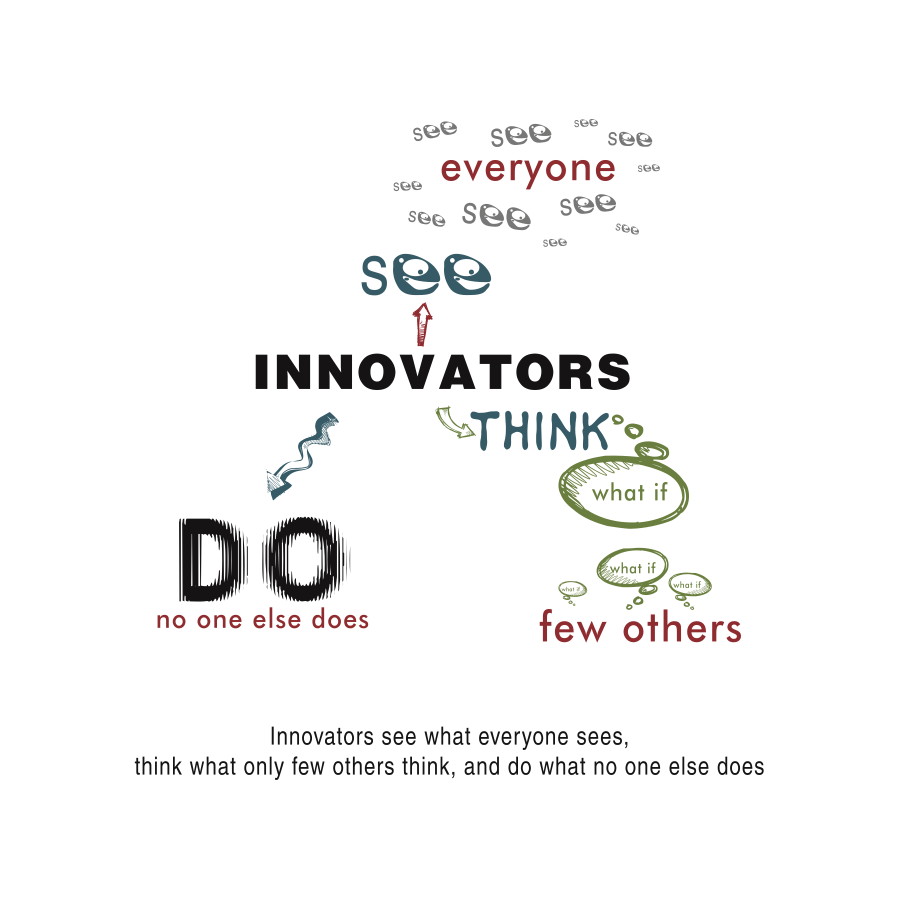Innovators see what everyone sees – thinks what only few others think – and do what no one else does

This saying has resonated with me for a long time. It suggests that there is a funnel, from seeing something to processing it to finally taking action. Innovation is the big prize for making it all the way through the funnel. Yet it’s not that simple, so let’s take a closer look.
What I like are the three distinct steps below, and it’s at the level of each step that we need to take a closer look:
Innovators see what everyone sees: The assumption here is that we all see everything around us. Far from true! We all have selective and different perceptions. Ever experienced a situation together with someone else where you had different memories of the event? It’s because you paid attention to different details, interpreted facts differently, and overlaid them with your view of the world and belief set. While we may live in the same world – surrounded with the same facts – we all see things differently. So, what does the innovator do differently here? The key is to take in as much as possible of the people and situations around us. Innovators have an ability to be fully present in the current situations.
Innovators think what only few others think: This is true – and, again, not as straightforward as it looks at first. It’s not that innovators have different thought patterns or are contrarian or necessarily more creative. It’s because they are not satisfied with the first option that comes to mind. Dan and Chip Heath have shown us in their book Decisive that the quality of our decisions goes up when we have more options. That’s what innovators do: They keep looking for additional options, even when have found one possible answer and option (even when the first answer seems like a good one).
Innovators do what no one else does: The difficult part about this is the mindset innovators need for taking action: they need to be willing to take a risk. And not just a small risk – a significant risk. No one has taken the same action before, so they don’t know the outcome. Do you remember an instance when you did something that had not been done before, which flew in the face of the advice and better judgement of everyone around you? That is really hard. Innovators are practiced at taking that risk and then boldly pursuing their choice.
The bottom line is this: The three steps above make sense as we want to find new solutions. They start with being fully present to the world and people around us, then thinking of as many new solutions and answers to the challenges and change, and finally being willing and able to take a risk as you boldly pursue the solution you consider the best. And, as I’m writing this, I’m aware that the original quote is much more catchy and easier to remember.
Make it real
This week, pay attention to the first step: seeing what everyone else sees. Pay attention to whether you’re fully present in your conversations, meetings, and own actions when alone. When you notice that you’re not fully present or hear your inner voice chattering about random or seemingly important stuff, put everything aside and refocus. Or, as colleague of mine, Alan Stein, put it: “Always be present where your feet are.”



